|
5th August 2022 It's a Friday and we're in Aldershot for some gaming! When you go into a national park, you may find yourself hiking along trails. Which is a slightly tortured segue into how Trails is actually a follow up to the excellent Parks game and shares some similar concepts. So let's hit the errr... trail and see how it stacks up? What's in a game?
For the most part, component quality in Trails is good. The wooden meeples look and feel good as does the die. I also like the wooden resource cubes, although I'm not a big fan of the colours which I feel are a little too muted and sometimes in poor light, the grey and the green colours can feel hard to distinguish. I also found the player colours a little muted too. All the tiles and tokens are constructed of thick card and feel weighty. However, I would describe all the cards as average in quality and perhaps a little flimsy. It's not really an issue though, Trails is not a card game and they won't be handled much so should stand up to repeated handling. Without a doubt, all the art in Trails is excellent. Much of it is sourced from the Fifty-Nine Parks art project which also provided the same art for Parks and will be familiar to players of that. So even though Trails is reusing artwork, it doesn't matter because it's such good quality. Having said that, a lot of images are heavily cropped and the fact they're all on relatively small components means they just don't look as impressive. Original art appears on the badge cards in the form of a series of quite stylised images. It's a different style to art that appears on the tile and photo cards but I have to say I think it looks good. All the main icons which appear on the tiles and die are easily understood. It's not quite so obvious with some of the rewards on badge cards and players will need to refer to the rules and clarifications on occasion. It's nothing game breaking though. How's it play? Setup
On to play In Trails, players will travel back and forth along the path, taking photos and accumulating resources which they will use to buy badge cards. The game follows a typical turn structure with the active player resolving their turn before play progresses to the left. As their action, the active player can move their meeple and resolve the tile it lands on.
Endgame When a player take as sun action that moves off the last leftmost icon on the trail end, they resolve that action as usual and take the sun token. Play progresses normally, until the player to the right of sun token holder has completed their action, upon which the game ends. I.e., once sun has taken the sun token, all other players get 1 more turn. Players now calculate their VPs.
Overall
I'm not over fond of comparing one game to another, a game should be taken on it own merits but in this case, there might be some value in doing so. Parks and Trails come from the same family of games and as such share some thematic elements. Both are about hiking along tiles, collecting resources to acquire photos and cards, as well as using canteens for a bonus. However, Trails differs in several ways as explained below. Unlike it's predecessor, hikers from multiple players can happily coexist on the same space so the stress and need to try and anticipate where other players' hikers will go is gone, as the tactic of trying to block other players. It makes the game a little lighter (By no means a bad thing.) and focuses players on getting badge cards (Which are the game's biggest source of VPs.) and players will encounter something of a conundrum here. They may have the urge to collect as many resources as possible which can be prudent but at the same time, they'll want to reach the trail head & end tiles quickly to get a certain badge card before other players. Trails is a game about optimisation especially since there are only 3 types to manage - although that 8 cube limit can be punishing. I also like the addition of the day turning into night mechanic, not only is it visually pleasing to watch the sun set, it adds some momentum to the game, upping the ante by giving players more resources and making it easier to get more badge cards. Players that have done well in the early game are not guaranteed victory. So is Trails a sufficiently different game to Parks to warrant having both? I would say yes. I bought copies of both and I'm glad I did. Trails felt like an easy game to learn and despite the fairly lengthy rules writeup above, is a reasonably light game that requires a little less brain power and also a little less directly competitive. Although for a lighter game is has a reasonably long play time - far too long to be considered a filler game. That's a minor criticism though and ultimately, Trails is a fun experience and is worth trying.
0 Comments
4th August 2022 It's a Thursday and we're round Simon's for a evening of gaming entertainment. Cascadia: 'A land of falling waters,' generally referring to a large wilderness area in the Pacific north-west of the USA. In Cascadia players vie to create a diverse landscape of habitats and wildlife in this tile placement game. What's in a game?
For the most part the components are all high quality. The tiles and tokens are sturdy and the wildlife tokens in particular are chunky and tactile. The pinecone tokens are average quality by modern standard - which means perfectly acceptable. The same is true of the cards, they feel a little flimsy but since they're only used to display information and won't really be handled much, they too are perfectly acceptable. The art used on cards is fantastic, having said that, each set of 4 only uses 2 images which are flipped and used a 2nd time, it's a minor quibble but it feels touch cheap. Art on the tiles is good too but is hard to appreciate since they are relatively small. Importantly, it's also uncluttered, differences between habitats is for the most part very easy to distinguish. Similarly, the wildlife icons are easy seen. As a minor aside: Prairies are depicted as yellow, which I guess represent dry grasslands. The yellow definitely does not represent desert! And yes; some of the yellow tiles have salmon icons on them, because, believe it or not, prairies can have water features. If you ever play the game and someone says, 'why are their fish in the desert', then let them know!! Anyway, back to talking about components. The iconography is easily understood in Cascadia. It's obvious what the wildlife icons represent and the icon for pinecones is equally as obvious. How's it play? Setup
On to play In Cascadia, players will draft tiles and wildlife tokens, using them to create a personal landscape by placing tiles adjacent to each other and putting tokens on top of them in order to create habitats and patterns of animals to score points. Cascadia follows a usual turn order with the active player resolving their action before play progresses to their left.
Endgame Play continues until all the face-down stacks of tiles have been depleted and only 3 tiles remain in the drafting area, which should also be a even number of player turns. VPs are scored from several sources.
Points are tallied, highest score wins. Overall
The rulebook for Cascadia talks about the real life habitats and biomes that inspired the game and it's obvious that this is one of those games where a bit of extra attention has been put into the details. On to the game itself: Cascadia has a nice mixture of quick to learn rules and depth of gameplay. This depth comes from forcing players to make tricky and meaningful decisions. This occurs because Cascadia has 3 axis' of play which will influence players' choices. The first comes from wanting tiles with specific habitats on them; players may want to expand their forests or rivers for example and will be looking for tiles that facilitate that. The second axis comes from also wanting tiles with specific wildlife icons. If a player needs a fox token in a certain spot, then they'll need a tile with a fox icon. The third and final axis comes from getting the actual wildlife tokens that are needed to score the wildlife cards. All of this means that it's unlikely that players will get all 3 that they want when picking a single pair which would be a no-brainer, they'll probably end getting 2 of they want and sometimes only 1. Players will need to adapt and re-strategize contextually, look to optimise their picks and finding other scoring opportunities. Players will probably have to gamble a little bit on getting what they need later in the game. Pinecone tokens can of course change things. Used at the right time they can really open up a player's choices, getting any pair can make a difference, as can clearing all wildlife tokens in the drafting area if a player is really looking for a certain token. Cascadia also has a fairly quick playtime, although it sort of occupies a game length that's way too long to be a filler but a little too short to fill an entire evening. I don't consider that a bad thing, you could just play twice! The randomness in setup and scoring gives it a lot of replayability. If I had a criticism of Cascadia, it would be that sometimes the card scoring can be a little unclear and finicky. The rulebook does offer elaborations on this, but it's a definite little niggle. Otherwise though, I think Cascadia is ab excellent tile-laying and set collectiing game. For me it ticks a lot of boxes that good games should; straightforward rules, some depth for decision making and a brisk playtime. It's one of those games I frequently like to carry in my board game bag when going to game events, so if I meet someone who's never met played Cascadia, they can try it. As should you! 30th June 2022 It's a Thursday and we're at Aldershot for some gaming goodness. Burger Boss! What's better than being a king? Being a boss of course! Be a boss of those burgers in this game of resource management and worker placement or if you want to be specific; dice-placement. What's in game?
All the game's cards are finished in vinyl/plastic and as such feel quite sturdy. The dice plastic, although they have nicely rounded corners. Wooden components are always a plus in my book. The discs used to represent burgers and ingredients are obviously wrongly proportioned but if they were correctly sized, they'd have to be much bigger, otherwise they'd make the handling ingredients even more fiddly than it already is - which is quite fiddly and is my one criticism of the components. Presentation wise, Burger Boss uses a cheerfully brash palette along with cartoonish illustrations. It's a bright, colourful art style that suits the game's light-hearted approach perfectly. There's little iconography used in the game and it's easily understood, mostly consisting of symbol ingredients and and dice values. The manager's special cards use text to provide information, which is a little sparse and will probably have players referring to the rules. It's not something that will occur too often though. Packaging I don't usually talk about a game's packaging - because usually it's just a box. Burger Boss however, comes in a giant burger! Inside are several layers to hold all of the game's components. Yes I know that it won't stack with other games and the manual doesn't fit in the burger and it'll just have to be put all back into it's normal, typical box anyway which technically defeats the purpose of the burger packing - but it gives the game a unique, eye-catching presentation and I like that. Yes, I also know it's just a gimmick but I like gimmicks! How's it play? Setup
On to play The objective in Burger Boss is to fulfil customer orders to earn money, this is done by gaining and cooking the required ingredients. All of these actions are achieved by putting dice on cards, many of these cards will require dice of specific values. The game does not have a traditional turn order and instead uses a mechanic that mixes randomness and player choice to determine player order. Once player order is established, whenever someone becomes the active player, they can take an action by using a die. Each round consists of the following phases.
Endgame The endgame is triggered when the customer card deck is depleted - although there will be customer cards in play. There is then 1 final round of playing then the game goes to scoring. Players total money from the following: Money earned from selling food to customers. Money earned from their secret objective card. Anything still on the grill earns $1 apiece; food in storage earns nothing. Cash is tallied, highest amount wins. Overall
Burger Boss is a light-to-midweight game, as written above, the rules seem a bit complex but in practice they're fairly straightforward. That's not say it's a good game for beginners - because it's not! There are several mechanics and concepts in Burger Boss that that require thinking ahead and someone nuanced decisionmaking. Quite often, it'll be impossible to complete a customer's order in a single round and generally there isn't enough cold storage to hold the required ingredients. This means that players will probably have to put ingredients on to their grill and hope to complete them in a later round. Mistake's can be costly and $1 is scant compensation for losing food. Which brings me to customers. There's a balance to be found between completing a customer order as quickly as possible and waiting for a later turn to earn more money but risking another player getting that customer first! While there is no direct interaction between players in Burger Boss, the game has a lot of open information and it definitely pays to watch what other players are doing; what they've got on their grills, where they're putting their workers and responding to this. This ties in with the turn order mechanic, sometimes players will want to use less workers to go earlier. Worker spaces to gain ingredients are limited and turn order can play a vital role when fulfilling customer orders, in both cases, going later and being stymied by other players' actions (Whether accidentally or deliberately.) can be infuriating. Burger Boss also has a a bit of the unexpected, manager's special card can also throw spanners into the works with unexpected special actions, especially when used judiciously. Despite this, the game provides options to gaining other benefits - or benefits other ways, if the baker or butcher is inaccessible for any reason, there's always the supermarket. There's a pretty generous number of worker spaces on the card for the aforementioned manager's cards. All of these means that rarely is a player presented with meaningless decisions which is always a good thing in games. I found Burger Boss to be a colourful, visually appealing game of making burger (OK, they stacks of ingredients, but still it looks good.) and fun worker placement and resource management game with a reasonable play time and gameplay that's tricky enough to tax the brain enough to be engaging, along with a side order (SIC) of competitiveness. 23rd June 2022 It's another Thursday evening and we're in Aldershot for another gaming night. Village Green - a local game for local people? It turns out that competitions between local villages to have the best village green can be serious business! What's in a game?
Well that's it for the components - a deck of cards. The card quality average and what you'd expect from games nowadays. Watercolour styled artwork is used throughout the game on the green and village cards. depicting various items that could be found on an English village green (SIC). It's a pleasant style and the artwork all looks appropriately good, fitting it's theme quite nicely. The iconography is not so well implemented though. I felt the symbols used for the different types of flower could have been a bit more distinct or individual, especially since the icons are quite small. I also felt the 3 different types of tree icon displayed on the bottom of the green cards and award cards could have had been more distinctive. Otherwise, the iconography is fine. How's it play? Set up
On to play The objective in Village Green is to construct a tableau of 3x3 green cards while on the 'outside' of this 3x3 grid create a row and column of award cards to score points off of the green cards. Thus creating an overall 4x4 grid - including the village card which will be in the top-left corner. Village Green uses the usual turn structure of having the active player complete their action then having play progress to the player on their left. The active player can take 1 of the following 2 actions.
Endgame There are 3 criteria which may end the game. If either the green card or award card deck is depleted, or a player has placed 9 green cards, then the end has been triggered. The current is completed and the game goes to scoring. Player score from the following sources: A face-up village card scored 1 VP Each visible pond scores 2 VPs. Award cards score all the (Up to 3.) cards in their respective row/column. Points are tallied, highest score wins. Overall
On a basic level, Village Green is a fair simple game - pick a card and play a card, which makes it straightforward and quick to understand. However, like all good games, it's easy to learn but hard to master and this is definitely the case with this game. What makes Village Green tricky is having to literally think 2 steps ahead. Players will need to pay attention to a green card's type and colour when playing it because it will influence what is played next to it. Not only is positioning important when playing a green card but the order in which they are played will matter too. E.g., putting a green card into the centre of the 3x3 grid means that all 4 orthogonally adjacent cards placed subsequently must match the flower type and colour for that card. If the centre card is played last, then it would have to match all 4 cards already played and that requires planning ahead. Matching 3 types and 3 colours might not seem difficult but remember, players will only have a hand of 3 green cards and a row of 3 cards to draft from. Sure, a player can keep drawing and discarding green cards to hopefully get what they need, but this can catch a player out. Once the deck is gone - it's game over. Additionally, while rinsing through green cards, other players may be completing their 3x3 grids, which is also game over. Ultimately, players will need to commit to taking some risks and play early cards with gaps between them for some wriggle room for placing later cards and also rely on a bit of luck to get what they need. Award cards are also tricky to manage but in a different way. Players start with three, which can be good as it gives each player a initial individual scoring target to aim for. However, as green cards get played and players may be forced to put them in certain positions thanks to type and colour, it may end up that a award card scores less, zero or even worse - negative VPs! Luckily, award cards can be nullified by covering them with other award cards later. This though raises another quandary for players to ponder. The later an award card is played in the game, the harder it will be to place in a way to maximise it's scoring potential. Finally, there's some potential for higher level play by watching what cards other players are putting down, trying to anticipate their actions and denying them what they need. Although, since some of the icons are so small, it can be physically tricky looking at other players' tableaus with leaning over them! All of these mechanics are good because they always provide players with meaningful decisions as they try and positions cards so that they match type and colour as well as scoring criteria. Having written all of that brings me to a drawback of the game, which is that it can be a harsh and unforgiving experience. Players will be frustrated when unable to play cards and are instead forced to discard. It's likely that some players will end up without all their possible green or award cards - I know I did on my first play. So despite being easy to learn, I'm not sure this is a game for more 'casual players'? If it 'groks' with them, they'll be fine. Otherwise it'll probably take a game or two to get handle on where to player cards. There's not denying it's a elegant, fairly engaging game. It plays quick enough and will provide players the challenge of being able to place all their cards and also optimise scoring opportunities. Definitely worth a try in my opinion. 12th June 2022 Sunday evening is here and we're logged into Board Game Arena for a night of gaming. Does a bear lay tiles in the woods, who knows? What I can tell you is that a bear definitely does lay tiles in the park thanks to Barenpark: A tile laying game about building a park for bears and bears only! Caveat: we've only ever played Barenpark digitally. What's in a game?
Barenpark's art is fairly minimal but effective. It's nothing to write home about but is perfectly functional. Tiles display artwork themed to their type, so the green tiles feature a portaloo for a toilet, a playground for a play ground and so on. The white and green tiles show buildings and habitats pertinent to the type of bear they represent. E.g., the polar tiles appear glacial. There are only a few icons in the game and they are easily learnt. They are also colour coded, thus the wheelbarrow icon - which is green - represents green tiles, thus white cement trucks are for white tiles and orange excavators are for orange. The work crew icon represents construction crews which is not related to tiles. One slight criticism here is that while there are green, white and orange tiles, some tiles which are coloured green will actually be white or orange tiles, there are also some glacial blue tiles which are actually orange. It's a minor quibble, but players will need to remember that a tile's colour is based on its scoring icon. This could have been improved by using unique colours. How's it play? Setup
On to play In Barenpark, players complete to create the best bear park ever. Players achieve this by placing tiles on to their boards which in turn allows them to draft more tiles and boards. Barenpark uses a traditional turn structure with the active player taking their turn before play progress to the player on their left. During the active player's turn, they must perform the following actions.
Endgame When any player completes their 4th game board, that is; collects their 4th bear statue, then the endgame is triggered. All other players now have one more turn of play and then the game goes to scoring. Players add together the value of all tiles played and bear statues placed on their game boards. Points are tallied, highest score wins. Overall
Barenpark is a smart blend between easily understood, accessible rules, meaningful decisions and optimising gameplay. The game is something of a race to get the highest scoring tiles and bear statue tokens first and this can put players in something of quandary. For the most part, players will want to draft white and orange tiles as often as possible because they score the points. They also cover more of the board and thus potentially draft more tiles. This is particularly true of orange tiles. It means that players should be looking to cover icons with their tiles placements as effectively as possible to gain more tiles. Using an entire turn just to gain a green tile is not particularly efficient. Having said that, greens are not bad tiles, sometimes getting green tiles is a useful move, those 1-space portaloos can fill in pesky gaps on a board, working towards getting bear statues. Talking of bear statue tokens. Sometimes it's worth taking a less efficient tile just to complete a board and gain a higher scoring token before another player. This is all of course contextual and dependant on the situation. There's definitely a small degree of higher level of play going on here that comes from watching other players turns and trying to anticipate their next moves. With limited numbers of white and orange tiles, knowing which tile another player might go for gives you the option of employing a denial strategy against them or beating them to the punch for a token. This brings me to the one criticism I have. When playing Barenpark in some circumstances it sometimes felt like that if one player got 'ahead' they tended to stay ahead. By ahead I mean managing to fill spaces on the board before other players. This is most apparent when drafting bear statue tokens. At times you can see that a player will complete one of their boards before you and claiming the better scoring token, then they'll also be ahead for the next board and claiming the token ahead of you again. Of course it's possible to re-prioritise and change which board you're trying to complete but since Barenpark has fairly linear gameplay (By which I mean you can only expand you tiles into areas where you already have tiles.), this can be tricky, although the endgame rules where players get an extra turn after whoever finished it probably goes some way to alleviating this. I think Barenpark is a good, if unremarkable game that feels a little 'bland' or functional and is a little on the light side of this style of tile-placement game but I don't see that bad thing. But quibbles aside, if you want a solid, tile-placing game that's not-too taxing but still engaging, Barenpark is a good choice. Barenpark's accessibility and 'lightness' means means it's a good choice for a gateway or entry game. 9th June 2022 We're in Aldershot for an evening of board gaming fun. So; in Isle of Cats, some evil bad guy is heading to the titular island (Which as the name might suggest, is filled with the felines.) to kill al the cats!!! Players have a limited number of rounds to save as many as possible. What's in a game?
Component quality is for the most part very good. Tiles are suitably thick and chunky and all the wooden tokens. The game boards feel fine too. The only quibble I have is that the cards feel a little flimsy. The artwork in Isle of Cats is excellent throughout with plenty of illustrations of weird and wonderful looking cats on all the tetromino tiles and many of the cards. The boards and other cards also display nice colourful artwork. I do have a minor criticism here too: The colours for the common and rare treasures is a little too similar to each other, they could have done with being a bit more distinct. There are few icons used in the game and they're all clear, however, I do have a of minor grumble. Each personal game board is divided up into 7 'rooms'. It can be hard to see how the board is split up in this manner, particularly when scoring at the end with all the clutter of tiles. The publisher's were aware of this as they put distinct little icons in the square for each room to help but even so, it's tricky thing to comprehend. How's it play? Setup
On to play In Isle of Cats, players are competing to cover as much of the the grid that is shown on their personal board as possible. This is done by acquiring and placing cat and treasure tiles. Players will also be looking to group cats by colour (Or family.) as much as possible as well as fulfilling whatever objectives they gain during the course of the game. Isle of Cats is played over a number of phases, with players acting in turn order during each phase. Note that the turn order is different to player order in Isle of Cats and can and probably will change from turn-to-turn,
Endgame Once the 5th round has finished, the game is over and it's goes to scoring. There are several sources for scoring points and the lesson cards in particular provide many ways to score:
That's right, it possible to lose VPs!
Points are tallied, highest score wins. Overall
There's a few things to think about in Isle of Cats but it's all paced out fairly well and never feels too complex. That's not to say there's no strategising to be done - because there is. The chief concern for players should be the management of their fish! Fish are not only used to buy cats but also discovery cards and they're the route to not gaining more VPs but initiative or gain bonuses. E.g., if you really want a certain tile, playing rescue cards with high 'boots' is important, but you'll need to keep them during the drafting phase - and pay for them. Players will need to balance their spending with their priorities and recognise when and what is more important at what time. Acquiring cat tiles is very important, building families, filling rooms, covering rats and treasure maps are all significant but so are going first or getting lesson cards and so on. Despite players having their own player boards, there's also a higher level of play about watching the actions of other players. For example; if another player has a big family of a certain breed of cats, it might be a good idea to deny them a beneficial card during the drafting phase and so But since this is a drafting game, players will also have to adapt to circumstances as they occur, such as having to take a cat tile that isn't wanted and finding a way to place it to maximise it's potential - or minimise it's damage! Isle of Cats is a mid-weight game that's pretty easy to learn and combines several mechanics in to a engaging cat-themed game. Whether it's deciding which cards to keep and later which ones to play, as well as what tiles to take and where to place them, Isle of Cats All nearly always gives players meaningful decisions to make and that's the sign of a good game. 29th May 2022 It's a Sunday Evening and we're on Board Game Arena for some gaming entertainment. Copenhagen; largest city in and capital of Denmark. Few know though, of the cities secret history of builders having ties with errr.... tetromino shapes? At least that's what the game Copenhagen would have you believe... sort of! Caveat: we've only ever played Copenhagen digitally. What's in a game?
The components for Copenhagen are pretty colourful and bright, although there's barely any art to speak of. There's also barely any iconography to speak of. The symbols on the ability tiles aren't immediately obvious and will probably require looking up in the rules a couple of times. Other than that though, everything else is easily understood. How's it play? Setup
On to play In Copenhagen, players take turns either gathering cards or playing them to gain tiles which they put on to their player board to score points. During their turn, the active player may perform exactly 1 of 2 possible actions.
Endgame Either one of two ways can trigger the game end. If the End Game card is drawn (Can only occur after shuffling the discard pile back into a draw deck.) then the game immediately ends. If a player scores a 12th point then the game immediately ends. In either case, points are tallied, highest score wins. Overall
Mechanically, Copenhagen is a fairly light, accessible game; players are either drafting cards or drafting tiles. It's the relationship between those 2 actions that's interesting. Firstly, there's not many tiles that go into the game, e.g., only 1 5-space tile is available in each colour and only 3 each of the other sizes in each colour, which is all quite deliberate. It takes more cards and thus more actions (And longer.) to get the bigger tiles which are the better tiles but there's the risk a player won't get the one they want. The bigger tiles are better because of the windows (Or lack of.) on them. Getting a lot of 2-space tiles will mean 50% of filled spaces on a player's board will be windowless, while getting a lot of 5-space tiles means only 20% of spaces are windowless. Completing a row or column with all windows essentially doubles the points that line is worth and the more windows a player can get on their board, the more likely they are to do this. This brings me to the next point, other than the 1-space tiles, every tile has a windowless space. This means it's very hard to create lines that all score windows. Players will want to position windowless spaces to minimise their effect and provides players with meaningful decisions to make. These two factors means that players are faced with a dilemma. Go for the quicker easier to get tiles and probably get a smaller score, or take the risk of losing our by going for bigger, better scoring tiles. There's definitely a higher level of play that involves watching what cards other players are drafting and trying to anticipate what colours they're going for. This kind of knowledge allows players to adapt to what they think their opponent is doing. I think Copenhagen is a fairly easy to learn game that has a streak of depth to it. Most people will pick it up fairly quickly. Having said that I personally found the game a little dull. There's nothing here that I haven't seen elsewhere, it's just packaged differently here. Copenhagen also played just a little too quickly for my liking (Normally something I'd never criticise a game for!); playing with just 3 people meant that frequently 6 cards were being drawn from the 70 card deck every round, this means the game would reach the end of the deck twice after 20-something cards drafts for each player. It felt like the game is mostly likely to deplete it's deck before a player gets to 12 points. To put that into perspective; if a player has 20-something card drafting actions, that in turn gives them the ability to draft around 50 spaces worth of tiles. The quickest way to reach 12 points is to have 6 filled rows, all with windows. That would require filling in 30 spaces at a minimum, this is provided they got the cards and tiles they wanted. I'm sure there are players out there that would find the challenge of getting to 12 points compelling but for me. It meant that I found the game unsatisfying and combined with it's blandness made it average and unremarkable. I can't really fault the game, it's just a little dull. 1st May 2022 It's a Sunday and we're logged into Board Game Arena for an evening of gaming. Azul; not a game about a villainous god-entity from Ghostbusters but actually a game about creating mosaic, decorative wall patterns with multi coloured tiles. My friend's a plasterer, wonder if he'd be good at this! Caveat: We've only ever played Azul digitally. What's in a game?
Azul doesn't make use of icons and the relationship between tokens and a player board is clear. How's it play? Setup
On to play In Azul, the player's objective is to place tokens on to their respective spots on the wall grid of their player board, which scores them VPs. This is done by filling in the horizontal lines in the pattern lines grid; players must collect tokens of the type they need and place them in the spaces on the respective horizontal line. Depending on the line, it will require 1-5 tokens to fill a line. When a line is filled, one of those tokens can be placed in the matching space on that line at the end of the round. All tokens will score 1 or more VPs when placed, tokens can also score again at the game end. Azul makes use of a traditional turn order, with the active player performing their action (Which will involve taking 1 or more tokens of the same type.) before play progresses to the player on the left.
Endgame When any horizontal line in the wall grid on any player's board has been filled, the endgame is triggered. The current end of round actions and scoring are completed and the game goes to final, bonus scoring. Bonus VPs can be scored scored by the following:
Points are tallied, highest score wins. Overall
On a rudimentary level, Azul's mechanics involve drafting handfuls of tokens and then placing them on to a board where their relative positioning scores varying amounts of VPs. It's a mechanic (Or a variation of that mechanic.) that have been employed in several other games and I'd say that Azul is a mid-weight iteration of it. As written the rules feel a little opaque and counter-intuitive but in application, they're pretty straightforward. Where Azul get its weightiness comes from two areas of the rules; how the drafting - particularly drafting from mats works and then where and when tiles should go on the grids. As a basic concept, collecting as many tokens as possible to fill out the pattern lines and consequently get tokens on the wall grid is the way to go. However, there's more to it than. For example, simply collecting too many tokens can sent the excess to the floor line and cost VPs, this is more important than it sounds, because as tokens are taken from the mats, it's inevitable that other tokens will build up in the centre and trying to predict this can be very important. Depending on circumstances, a lot of tokens of a particular type may well build up in the centre. A player may want 4 red tokens for example, should they try and take them in drips and drabs from several mats over several turns or wait for them to accumulate in the centre? Provided of that they do accumulate in the centre, what if too many go to the centre? There's definitely a higher level of play where watching what other players are doing is important. Quite often it's clear what they're prioritising, what they want or don't want in the next few turns. If they have a single token in the 5-space line on the left, it's likely they'll be looking to fill that out. Conversely, if they've already got 1 or more scoring tokens on the right side, they'll be unlikely or unable to use more of those tokens. Being able to predict other player's objectives will help when making decisions. It can also allow a player to try and deny tokens to other players and curiously, on some occasions force other players to take tokens they don't want. Players will also want to think about how and when to place their scoring tokens. Putting them down willy-nilly is a sure way to minimise points. Obviously in order to optimise points, tokens should ideally be put on to the wall adjacent to other tokens. Placing them vertically is a good way to go, since completed vertical lines earn an additional 7 VPs each, unless a player is looking to end the game, in which case they can go for the horizontal line! This brings me to an interesting facet in the mechanics, scoring the diagonal, i.e., putting all the tokens of 1 type on to the wall grid scores the biggest bonus; 10 VPs but as they are diagonal, they can't score off of each other! Additionally, once a diagonal of a type has been completed, the player can no longer score tokens of that type at all, collecting those tokens will now just incur penalty points in the floor line. Should a player hold off getting the diagonal until later which lowers the risk of sending tokens to the floor line or wait? Waiting will mean risking not completing it at all. I have to say I'm not fond of mechanics which lose players points especially if it can occur out of their control, it irritates like a unreachable itch and can be a little stress inducing. I find that's the case with Azul as well. However, having said that, the truth is; this is what makes Azul a good game and gives it depth. It means that collecting tokens either earns VPs (Or contributes towards acquiring VPs.) or loses VPs. It's always a meaningful decision. Other iterations of these mechanics are a little less stressful, brain-boiling and perhaps more accessible. But if depth is what you're looking along with a dollop indirect interaction between players, then Azul is worth a try. 15th April 2022 It's a Friday and we're logged into Board Game Arena for some afternoon gaming. Take a road trip across America, visit the landmarks, go wildlife spotting, play some sports, end where you started? Send a postcard (Or write a letter from America.), walk 500 miles, maybe walk 500 more... OK, enough of the tenuous references. Boomerang: USA combines set collecting and roll and write mechanics into a point salad of a scoring game. Caveat: We've only ever played Boomerang: USA digitally. What's in a game?
The only artwork in the game appears on the 28 cards and is obviously referencing the locations the cards represent. It's pretty artwork too, with blue skies and bright colours. Using letters/symbols for cities is a smart move and easily understood. Boomerang: USA makes use of 4 types of sets to collect and each set will feature its own range of icons, it means that the game has a fairly large array of icons. Luckily, it's clear which icons belong to which set and players don't need to reference a rulebook to know what they mean since the game is about matching icons in their respective sets. How's it play? Boomerang: USA is played over 4 rounds and uses a drafting mechanic where players pick a card from their hand and then passes the remaining cards to their left, then all chosen cards are revealed (Or not for the first card.) simultaneously. This continues until all cards have been selected and players have acquired 7 cards.
Endgame Once the 4th round is completed and scored, players then total their final score from across all 4 rounds. Points are tallied, highest score wins. Overall
On a basic level, Boomerang: USA is a straightforward drafting game. It's point salad of scoring mechanics makes the game complex, most of the blog above talks about the 7 ways to score VPs. Some of the scoring methods have pretty standard elements, collecting matching pairs or 1 kind of set are common, however, restrictions on how these are scored, particularly for Americana activities add an unusual twist. The throw and catch mechanic is the standout here, presenting players with a clear risk and reward choice right at the start of a round especially when this is when they'll have all 7 cards to choose from. Play a 1 as the throw card and it's guaranteed to score but is only worth 1 VP. Playing a 7 as the throw card earns 7 VPS but requires a 7 as the catch card; since player have no control over what their last card will be it's a risky proposition. Typical for a game of this type, it's more or less impossible to score well in all categories at the same and the dilemma of what a player should prioritise is what drives the gameplay. Should a player concentrate on getting locations and regions (Which are another type of set really.) over other sets? Is it a good idea to have a steadily increasing Americana score over round, or go high then score 0 to score high again? When is a good time to try and get a good score in a particular activity? A lot of this will be contextual or unpredictable, it's the nature of this kind of drafting game. Players will probably start a round with no clear direction and will need to adapt to a strategy and recognise what to prioritise as it emerges from whatever cards they pick. There's also a higher level of play where players can watch their opponents to try and gauge what they're concentrating on and deny it to them: If it looks like an opponent is trying to complete coast-to-coast, a player might chose and play a card with the location needed themselves in order to deny that other player. Although I'm not sure that denial tactics are that effective though, it's entirely possible blocking a opponent will involve blocking yourself as well. I felt like the travelling, roll and write element was a bit out of place here, adding extra layers of what seem like unnecessary complexity the game. So while the game has depth thanks to all these scoring opportunities, it actually felt like it was perhaps a little detrimental to the experience, increasing thinking time and inducing some analysis-paralysis as a consequence. Otherwise I can't really find fault with Boomerang: USA, it's not a bad game by any stretch, it just somehow didn't appeal and seemed a little unengaging. Maybe the theme of being a tourist did quite gel with me? I feel that there are other mechanically similar games that are a little more accessible and quicker to play. Obviously, YMMV, a fan of card drafting games who plays them often might find the roll and write part of Boomerang: USA a fresh take in the category. 15th March 2022 We're with the Woking Gaming Club at The Sovereigns for some Tuesday evening entertainment. Four Gardens is a game about you guessed it... four gardens, it's also about spinning a pagoda! I'm not sure if Spinning Pagodas would be a better name or not? Why are players spinning a pagoda? Apparently, the pagoda contains some gods! Who... I guess... like... being spun? What's in a game?
The resource tokens felt like they were wooden and the wooden cubes were pretty standard wooden cube components, which is something I like. The tiles were standard quality card tile and fine, I thought having tiles with little hole to hold resource tokens was a pretty smart move. The card were also pretty standard quality from what I could tell. From the large, eye-catching and rotating pagoda to the tactile resource tokens shaped and coloured identically to their icons in the game; Four Gardens has excellent presentation. The backs of the cards which, when placed together form the panoramic views of the titular feature excellent, colourful and interesting art. Four Gardens features a fair amount of iconography, from the 4 scoring tracks and types of gardens to symbols for resources and different actions available on cards. For the most part, it's instantly understandable and there should be few problems with the iconography. How's it play? Setup
On to play As the name suggests, the objective is to create 4 garden panoramas using the backs of the cards. Four Gardens uses the traditional turn, with the active player acting with play then progressing to the player on the left. During their turn, the active must perform exactly 3 actions. Each action also requires the player to play or discard one of the cards in their hand. There are 4 actions that can be performed, these can be performed in any order the player sees fit. The actions are:
Endgame Depending on the player count, once 8-10 panorama cards have been constructed by any player, play goes into the endgame and the current round is completed. Players calculated VPs earned from the 4 scoring tracks and points they may have gotten from a bonus VP track. Points are tallied, highest score wins. Overall
I'll start by discussing the pagoda - the game's most obvious feature. Is it a gimmick mechanic? Maybe. Does it work well? Definitely. It's also quite a unique mechanic and not something I've seen anywhere else. When used in conjunction with the rule limiting how many resources can be collected on the planning tile, it forces players to really think about how they have to manipulate the pagoda to get the resources they need: It takes an action to empty a planning tile that's been filled unnecessarily and that's an action that could be used elsewhere. I think it's a set of mechanics that works very well. Talking about the pagoda does lead me to one gripe: Which is the rule where all players should sit around the pagoda at 90' angles. Players don't always have the right gaming space to accommodate this and while strictly speaking, it's not necessary as players can remember what side of the pagoda is meant to be facing them, it's inconvenient and finicky. The card-synergy, or more accurately score-synergy is a pretty clever rule, providing players a reason to work towards completing panoramas. The 4 scoring tracks seem a little unnecessary but in practice they work fine. This brings me to the knock-back mechanic. It feels a little harsh that, if a player gets their scoring marker knocked off the board, it can't come back into scoring. On the other hand if a player has reached maximum on a track and other players are lingering at the bottom, it's probably not a priority for those other players, so not that much of a loss. So yes, it feels a bit harsh but it's not game breaking. All of this means players will look to optimise the order in which they play cards to optimise how they increase their scores. Concentrating on increasing scores in 1 or 2 tracks can potentially knock-back other players. Conversely, working towards completing panoramas can earn bonuses which may prove useful elsewhere; sometimes you'll be able to do both but sometimes not and looking for opportunities to exploit these times is vital. The also makes use of a variation of the hand-as-currency mechanic, except here it's used to trigger actions and not to actually pay for something. Despite this difference, it places that same conundrum on players; which is how to choose which card to discard? Obviously, they'll be times when it has to be a card with the action they need but otherwise, it's another meaningful decision to make. In conclusion; Four Gardens is a fairly easy to learn set-collecting game that provides players with enough decisions to be engaging, fun and provides unusual resource gathering and scoring mechanics which makes it feel unique. I enjoyed it and think it's worth a try. |
AuthorI play, I paint. Archives
March 2024
Categories
All
|

















































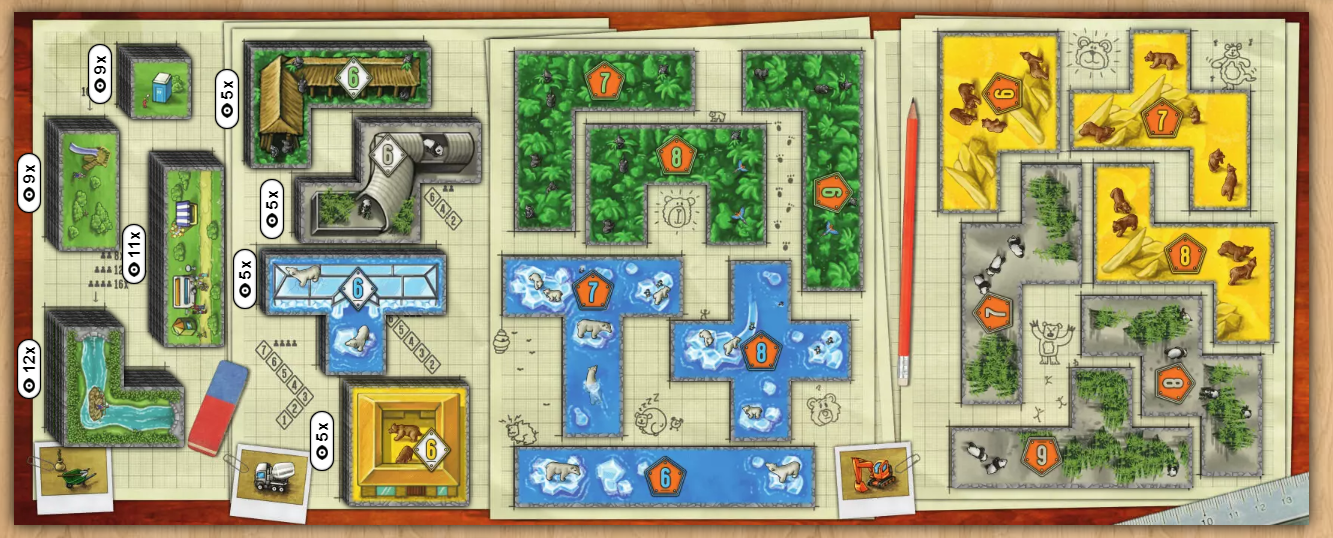
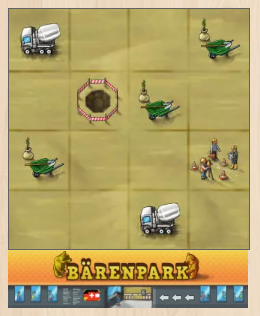
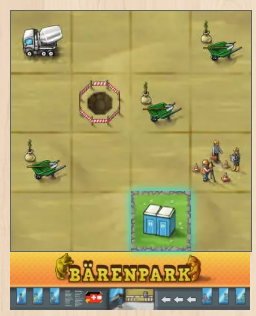
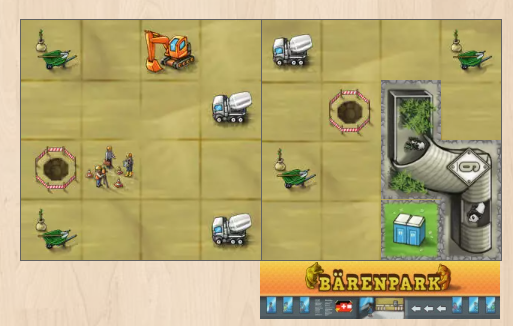
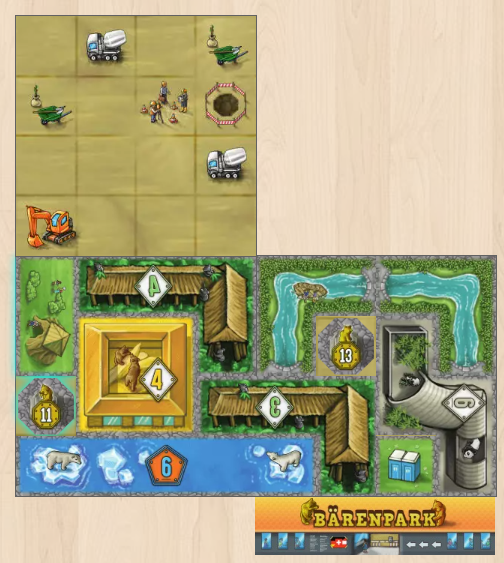
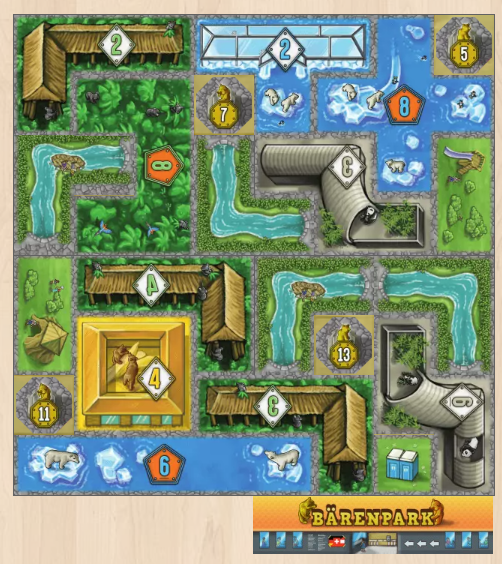
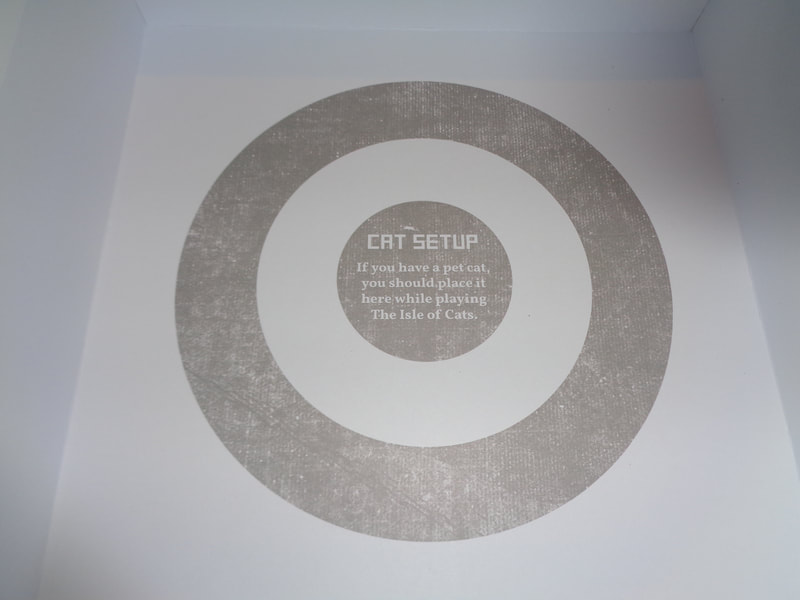
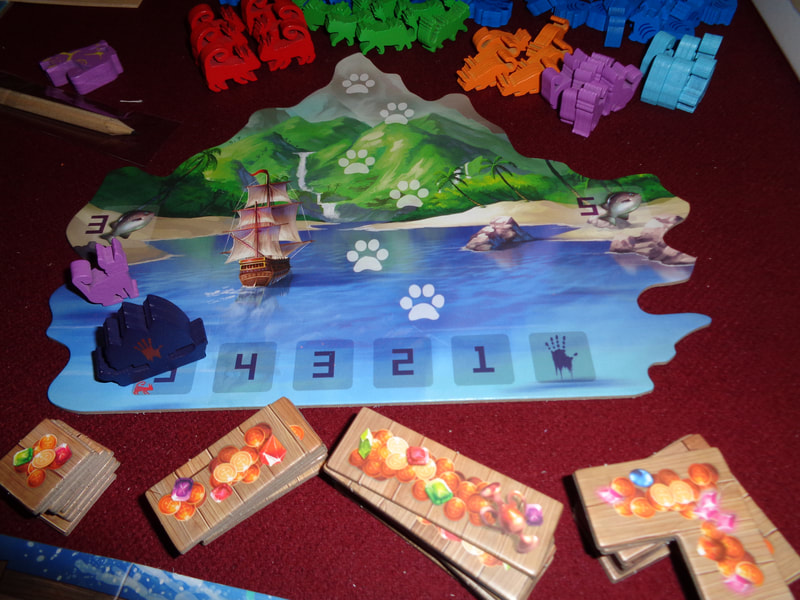
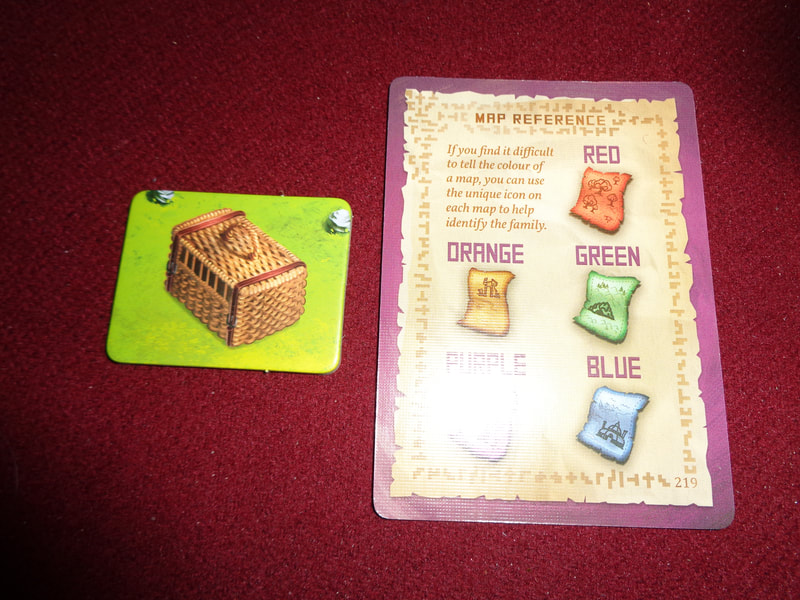
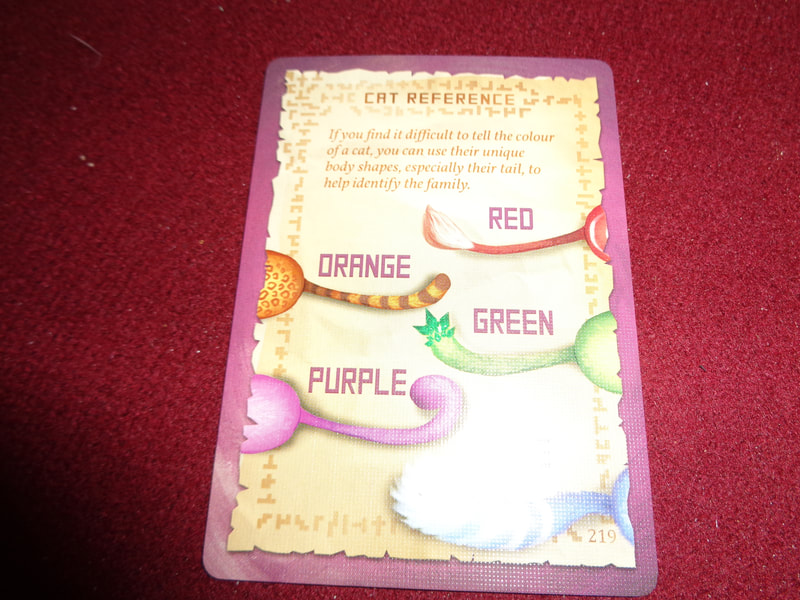
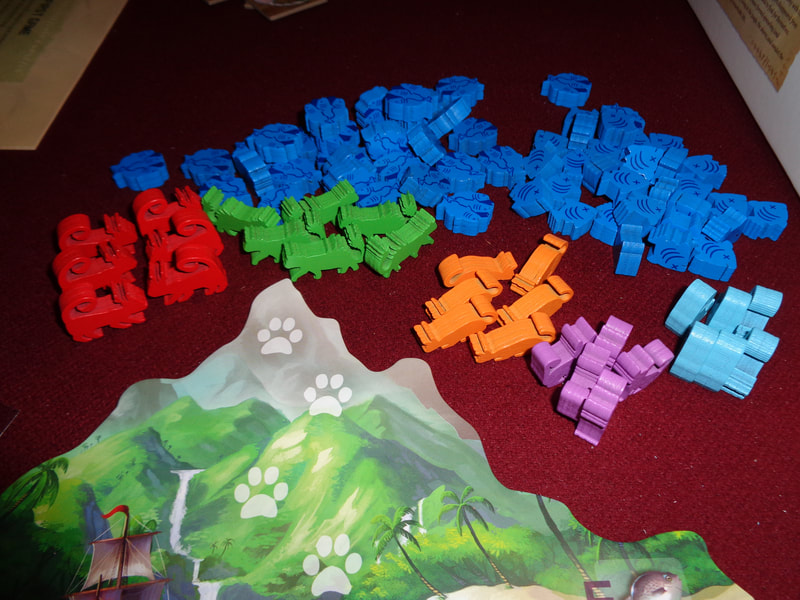
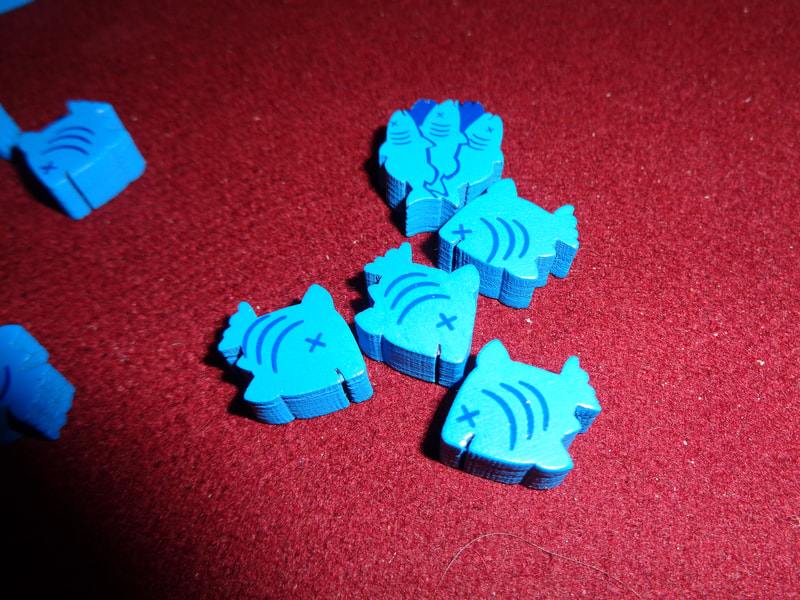
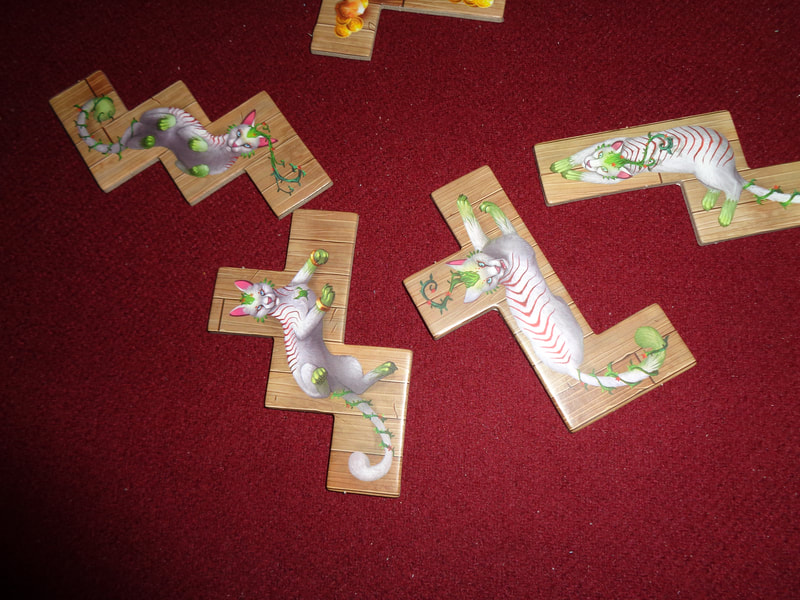
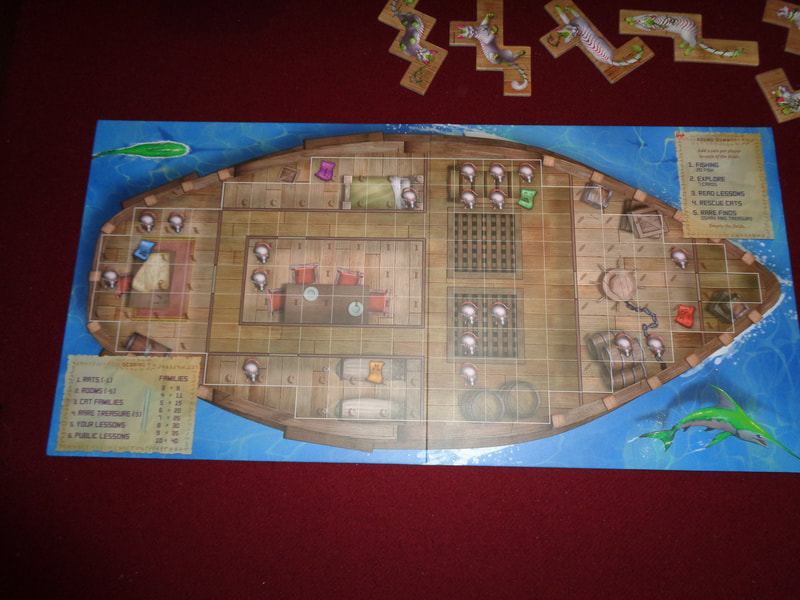
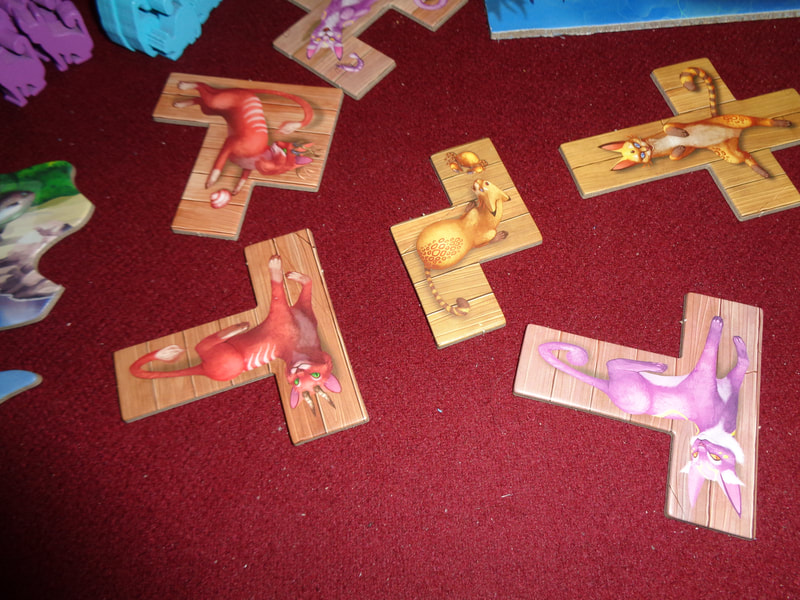
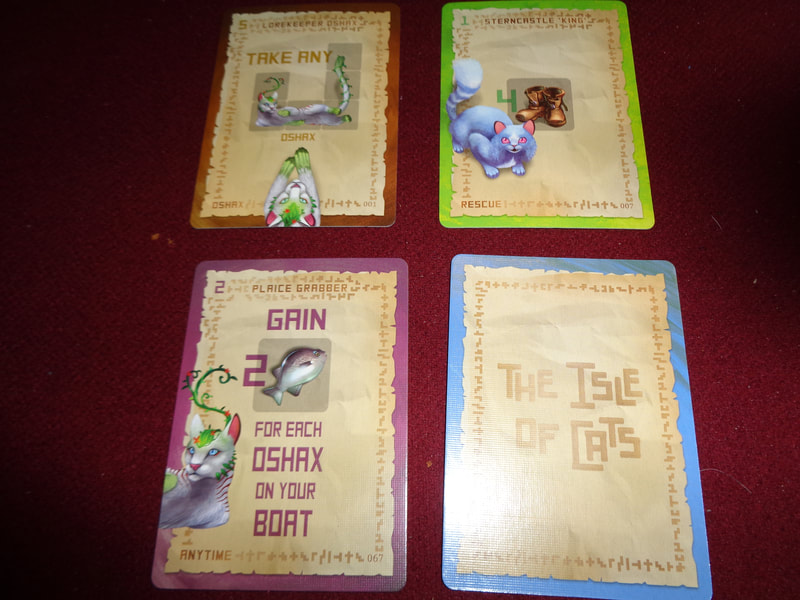
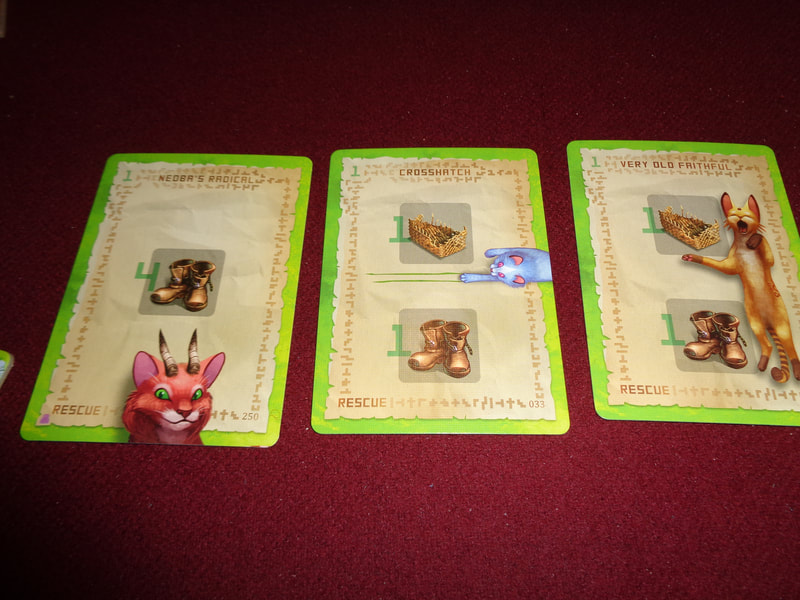
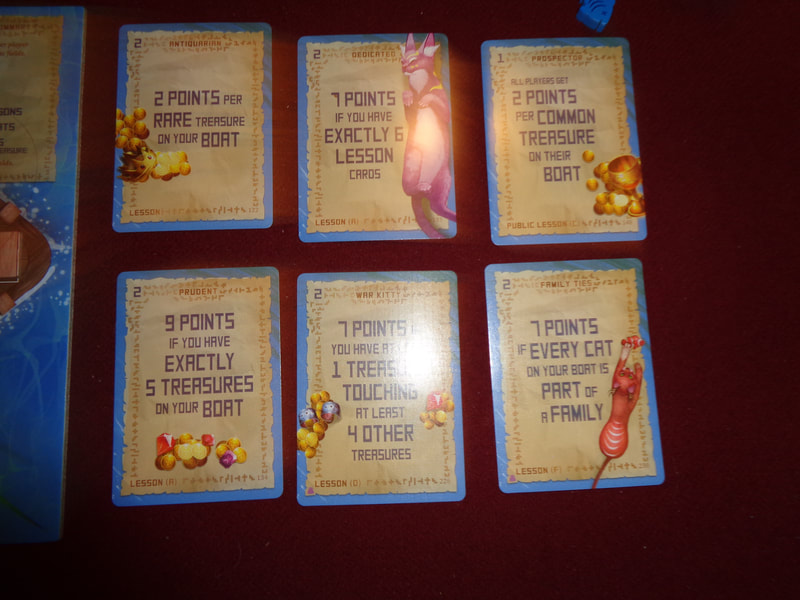
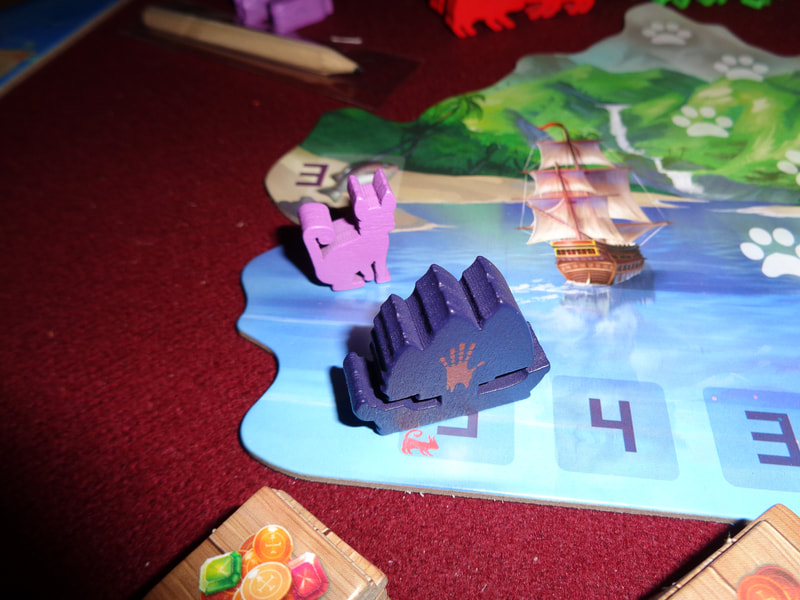
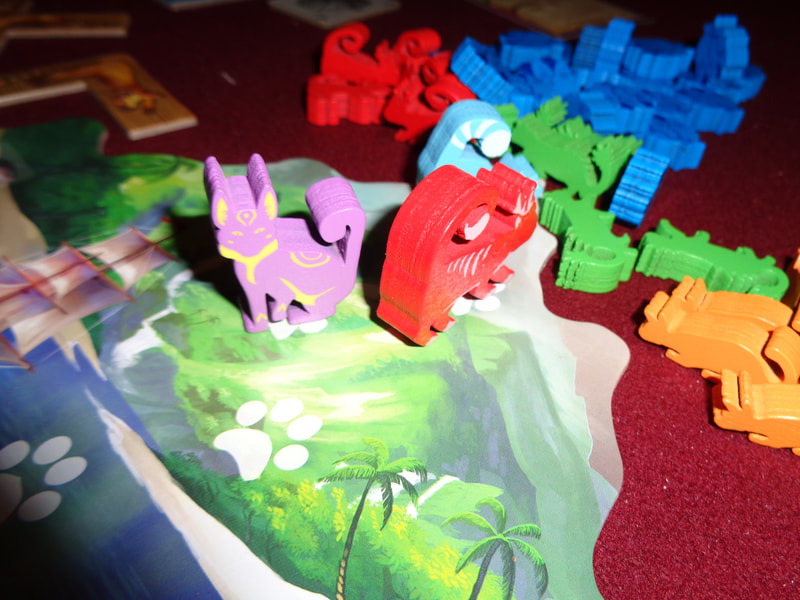
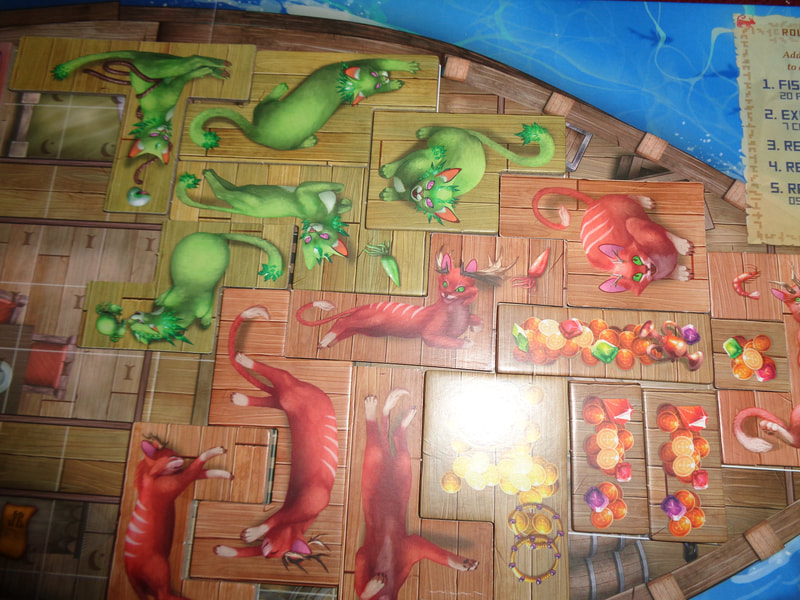
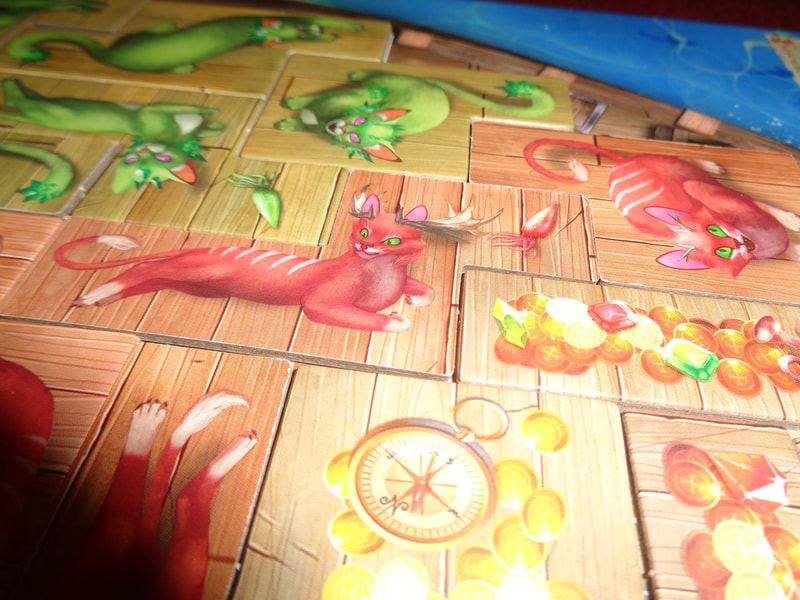
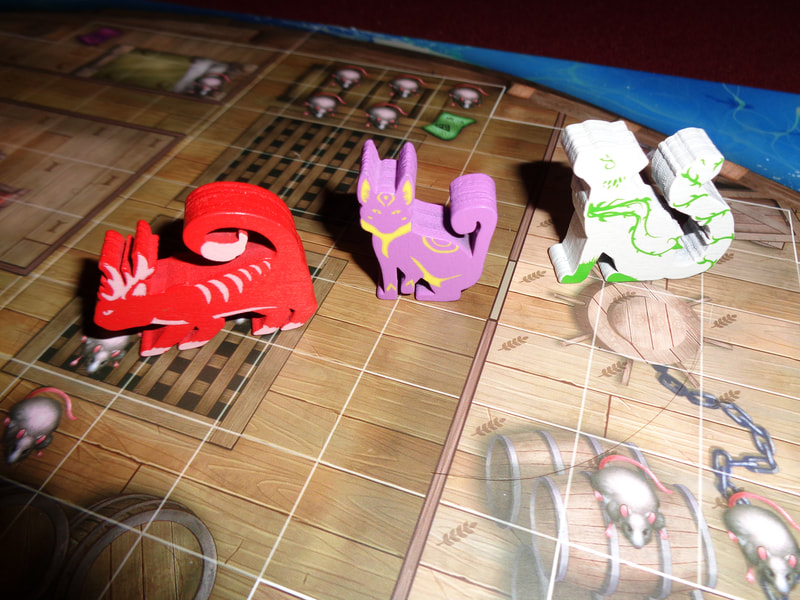
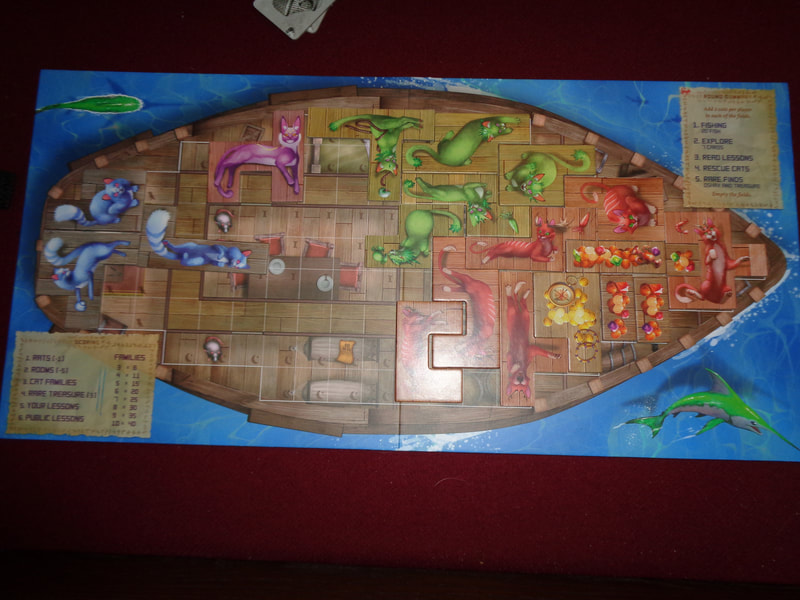
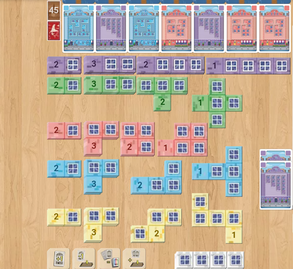
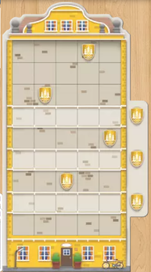
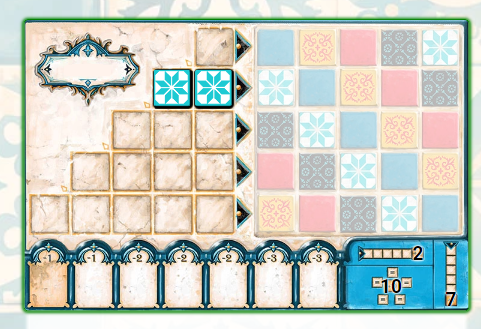
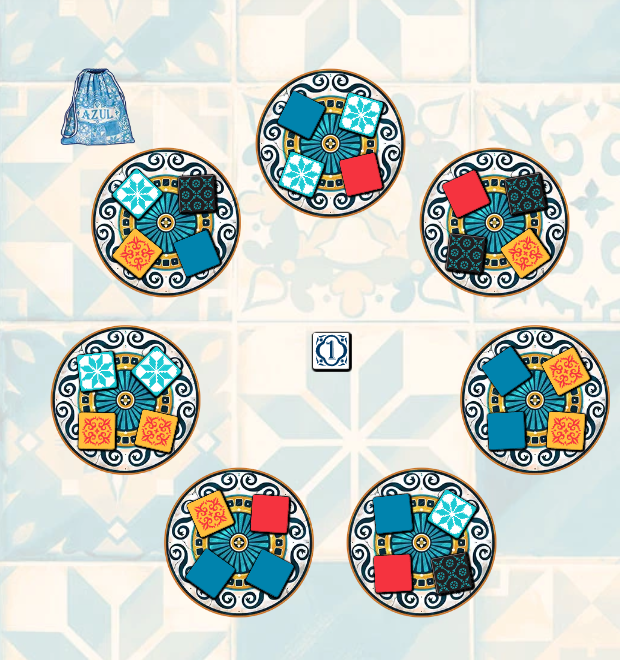
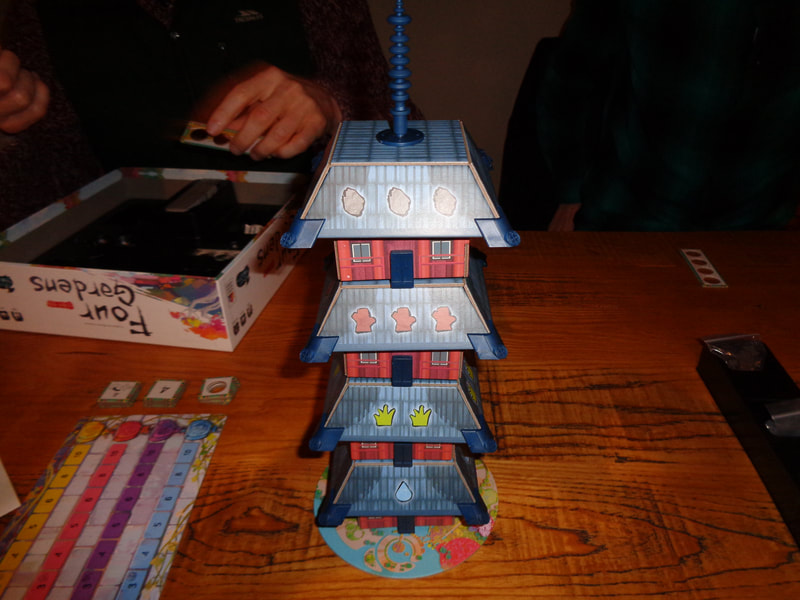
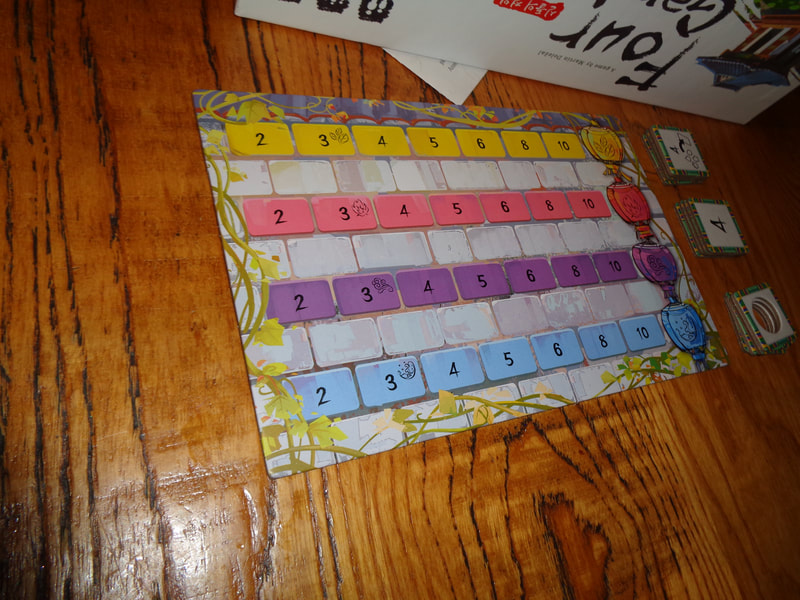
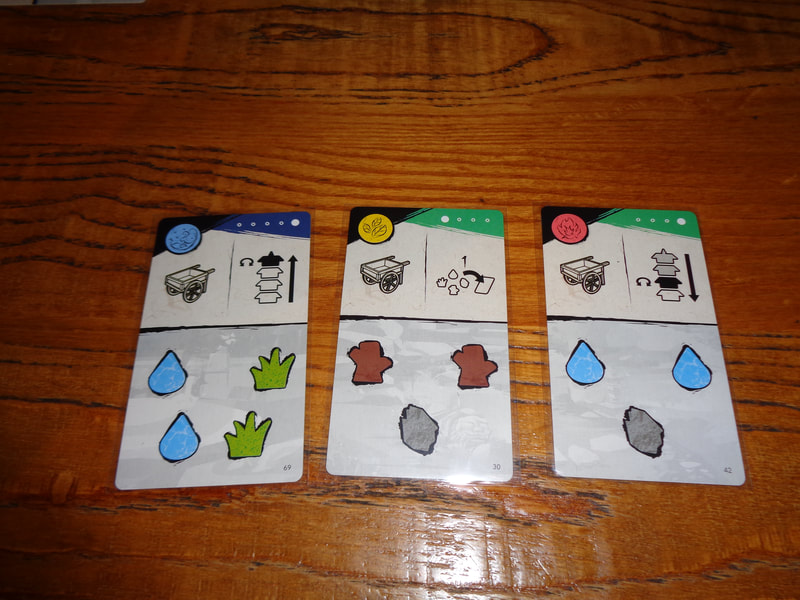
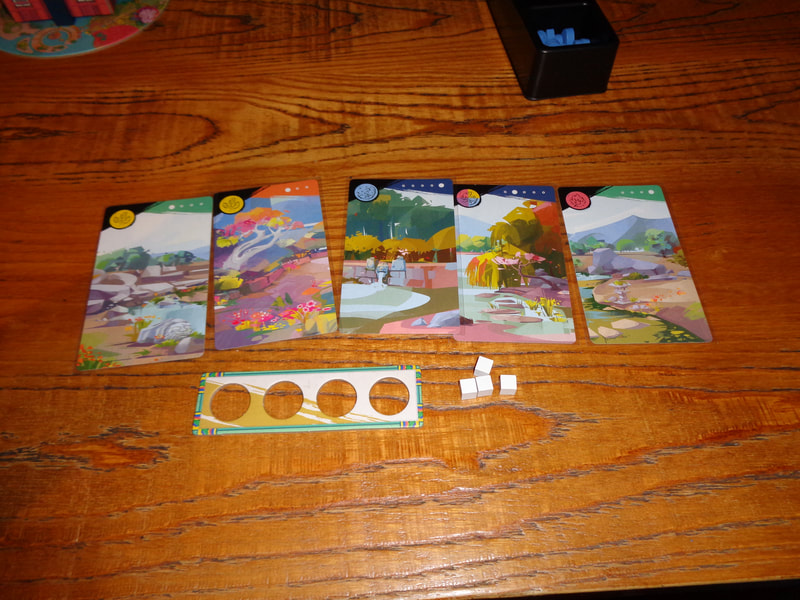
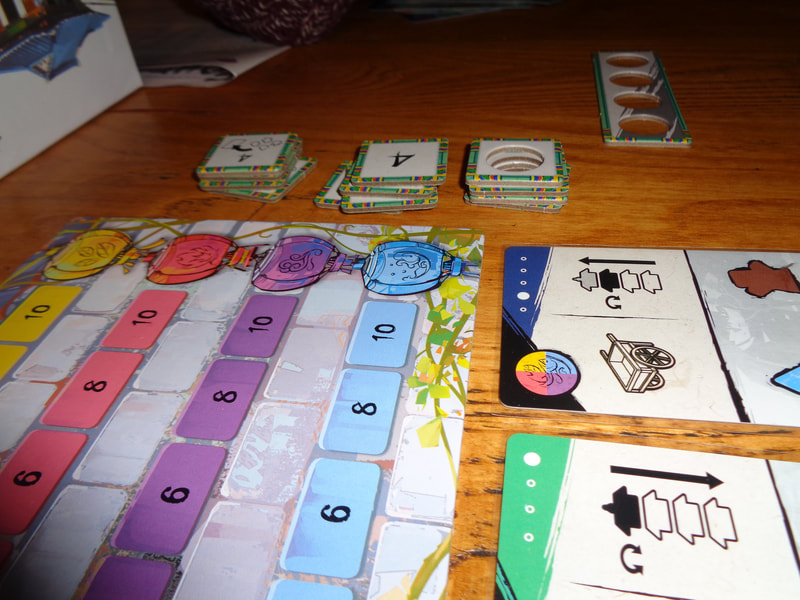
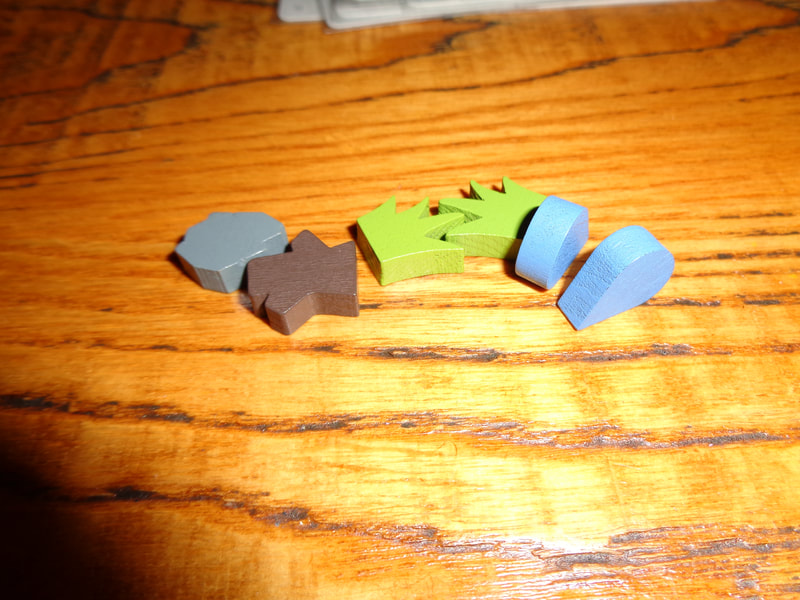
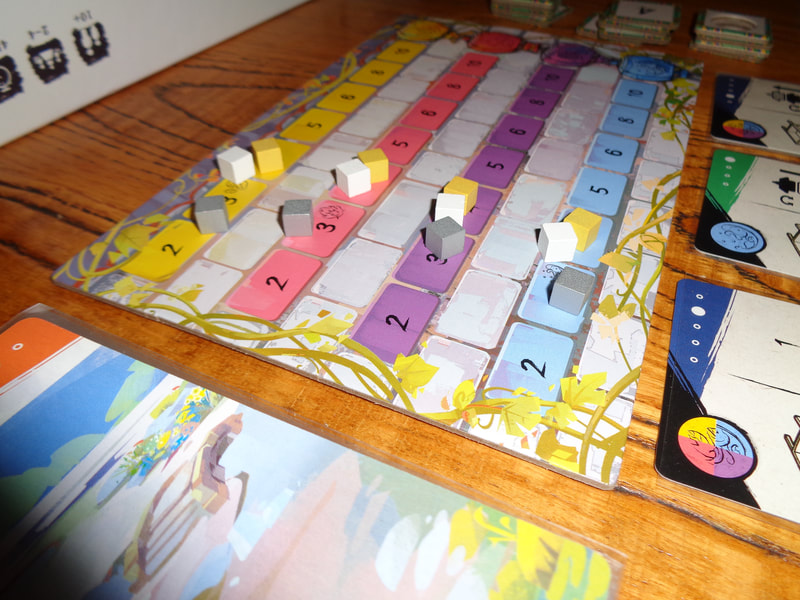
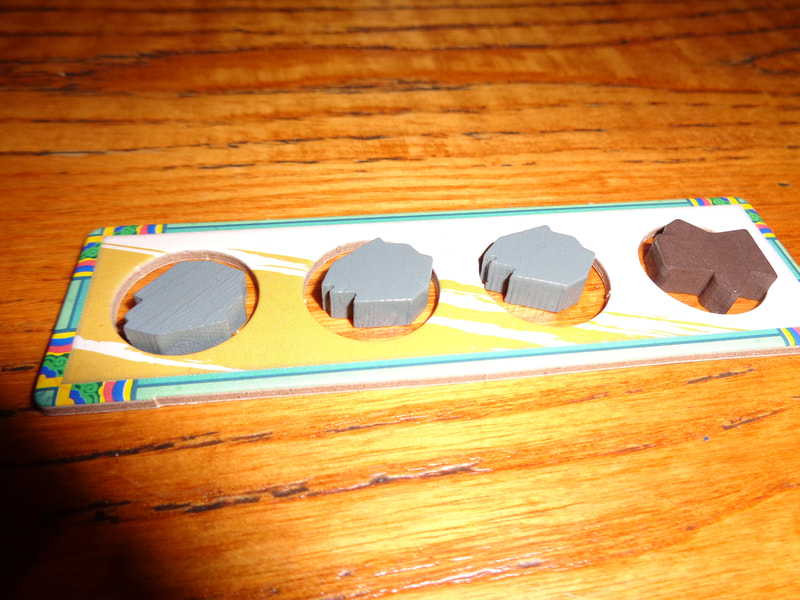
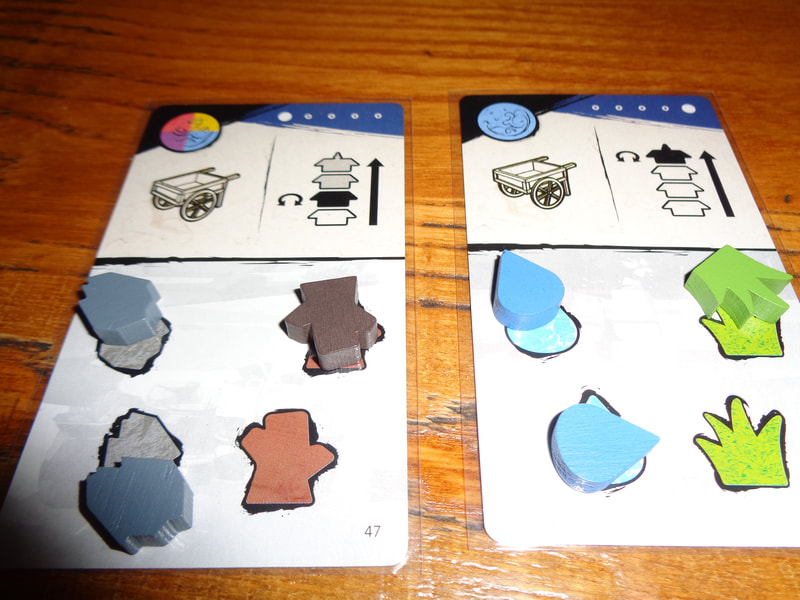
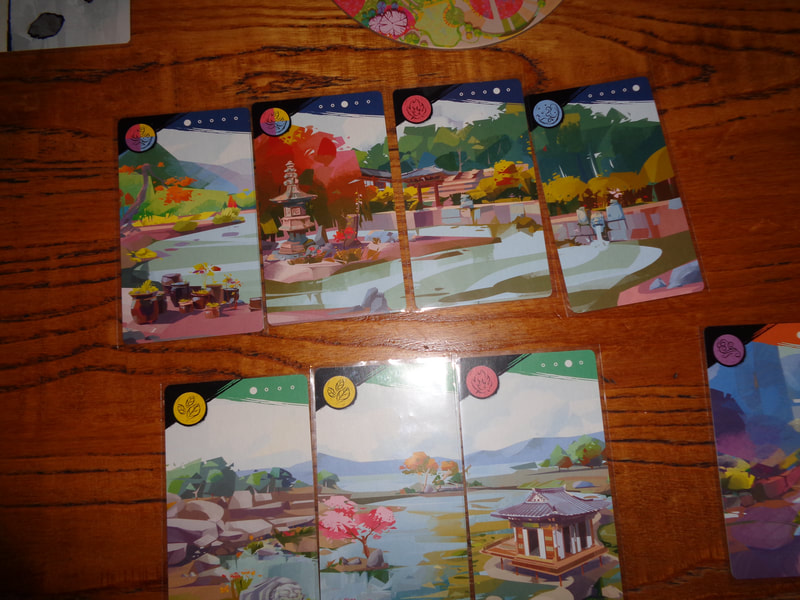
 RSS Feed
RSS Feed
